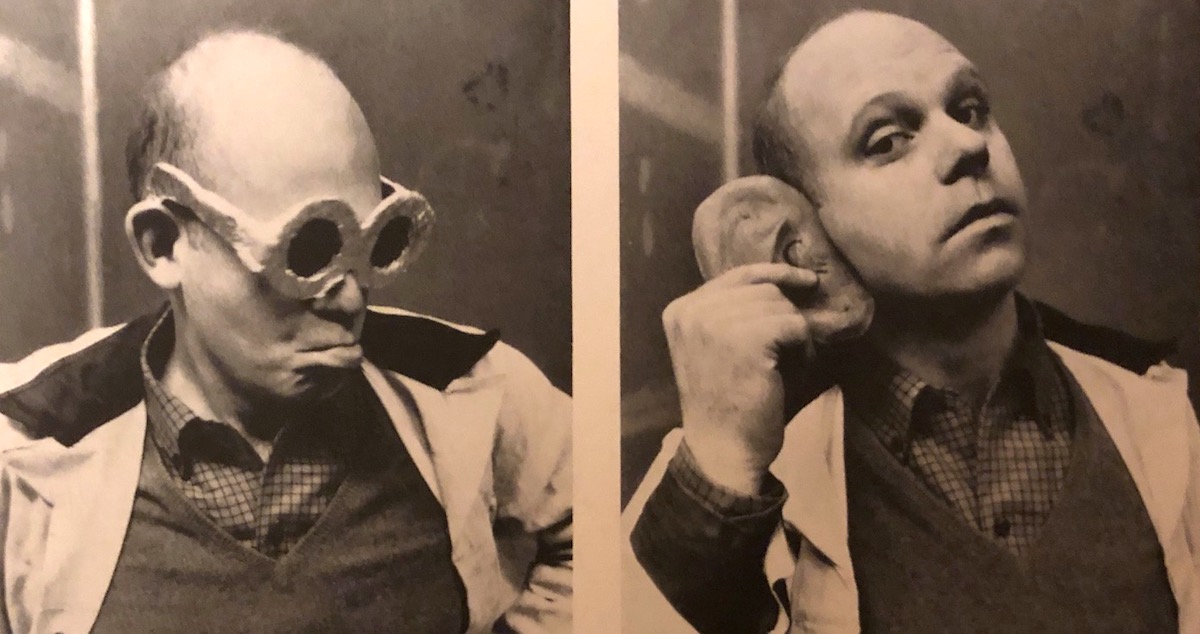Claes Oldenburg, the first-wave Pop Artist who turned everyday objects into hard and soft sculptures, has died aged 93. Pace his Gallery for many years said, ‘We are saddened to announce the artist passed away on Monday, July 18.
Renowned for his sculptures, drawings, and colossal public monuments that transform familiar, everyday objects into animated entities, Oldenburg was a leading voice of the Pop Art movement, which, over more than six decades, redefined the history of art. With his wife and longtime collaborator Coosje van Bruggen, Oldenburg realized over 40 large-scale public projects worldwide. Oldenburg and Pace Founder and Chairman Arne Glimcher maintained a friendship for 60 years, working closely since the early years of the artist’s career.
I was honoured to have this great friendship with one of the most radical artists of the 20th century. In addition to his inextricable role in the development of Pop Art, he changed the very nature of sculpture from hard to soft, and his influence can be seen to this day. – Arne Glimcher
Oldenburg rose to prominence in New York in the late 1950s and early 1960s, when he was among the artists staging Happenings—a hybrid art form incorporating installation, performance, and other mediums—on the city’s Lower East Side. Collaborative and ephemeral, these environments included The Street (1960), The Store (1961), and Bedroom Ensemble (1963). Following his work with props in these Happenings, Oldenburg began creating his iconic soft sculptures, which charted new frontiers in the medium, upending its traditional contents, forms, and materials.
Oldenburg first exhibited with Pace in 1962 and had his first solo exhibition with the Gallery in 1964, featuring works from The Store. Pace has presented Oldenburg’s work in 30 productions and produced seven catalogues dedicated to his practice. The Gallery also supported Oldenburg and van Bruggen’s creation of the large-scale sculptures Typewriter Eraser, Scale X (1998-99), which is part of the collection of the National Gallery of Art in Washington, D.C.,
Balzac Pétanque (2002), which is in the collection of the High Museum of Art in Atlanta, and Floating Peel (2002) at the Cantor Center for Visual Arts at Stanford University, among many other projects.
Born in Stockholm in 1929, Oldenburg studied at Yale University and the Art Institute of Chicago, where artist Paul Wieghardt was among his mentors. The artist’s first large-scale public intervention, a six-foot deep ditch titled Placid Civic Monument, was realized in Central Park in New York, behind the Metropolitan Museum of Art, in 1967. In 1969, his large-scale steel sculpture Lipstick (Ascending) on Caterpillar Tracks, another early public work, was unveiled at Yale University.
Oldenburg married van Bruggen in 1977, and the pair would work together for over 30 years, creating transformational sculptures, performances, and other works of art. Their monumental sculptures have been installed across the United States, Europe, and Asia at Rincon Park in San Francisco, Piazzale Cadorna in Milan, Cheonggyecheon Stream in Seoul, and many other sites. In addition, Oldenburg and van Bruggen’s large-scale sculpture Spoonbridge and Cherry (1985-88) at the Walker Art Center in Minneapolis has become a city symbol.
“In public sites, our sculptures reflect both the surroundings and their context, but through our imagination and selective perception—which is what makes them also personal,” Oldenburg once said. “We feel free to use all the approaches that come naturally to our non-monumental works: variations in scale, similes, transformations, a wide range of materials, and, of course, our use of familiar objects.”
Other important works by the duo include The Music Room, which debuted at PaceWildenstein in New York in 2005 and was later presented at the Whitney Museum of American Art, and the performance Il Corso del Coltello, which was first introduced in Venice, Italy, in 1985 as part of a collaboration with the architect Frank Gehry and the curator and writer Germano Celant.
Following van Bruggen’s death in 2009, Claes Oldenburg produced only one body of work, Shelf Life, which was the subject of a 2017 solo exhibition with Pace in New York. This entire body of work was acquired by the Museum of Fine Arts, Boston, and it was the focus of a 2018 exhibition at the museum.
Oldenburg/van Bruggen, Dropped Bouquet, 2021 © Oldenburg/van Bruggen
In 2021, Oldenburg and van Bruggen’s work was presented in the solo exhibition A Duet at Pace’s New York gallery. In addition, the show spotlighted Dropped Bouquet (2021), the couple’s final work together, conceived toward the end of van Bruggen’s life.
Oldenburg’s work can be found in significant museum collections worldwide, including the Metropolitan Museum of Art, New York; the Guggenheim Museum, New York; the Museum of Modern Art, New York; the Whitney Museum of American Art, New York; the Menil Collection, Houston; the San Francisco Museum of Modern Art; Tate, London; the Moderna Museet, Stockholm; the Stedelijk Museum, Amsterdam; and other institutions.
Top Photo: Ugo Mulas Insert © Artlyst

